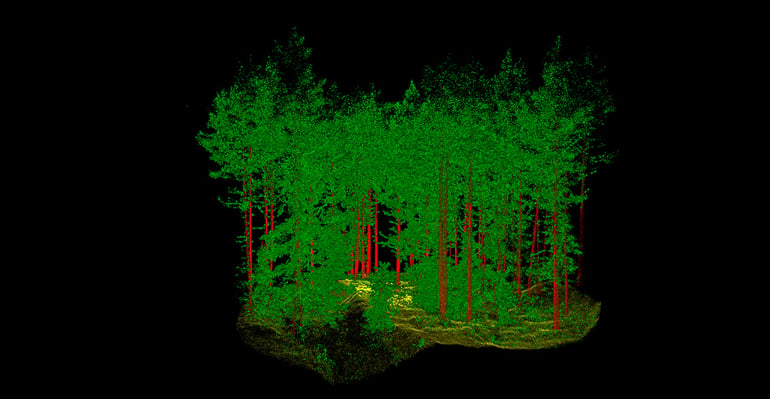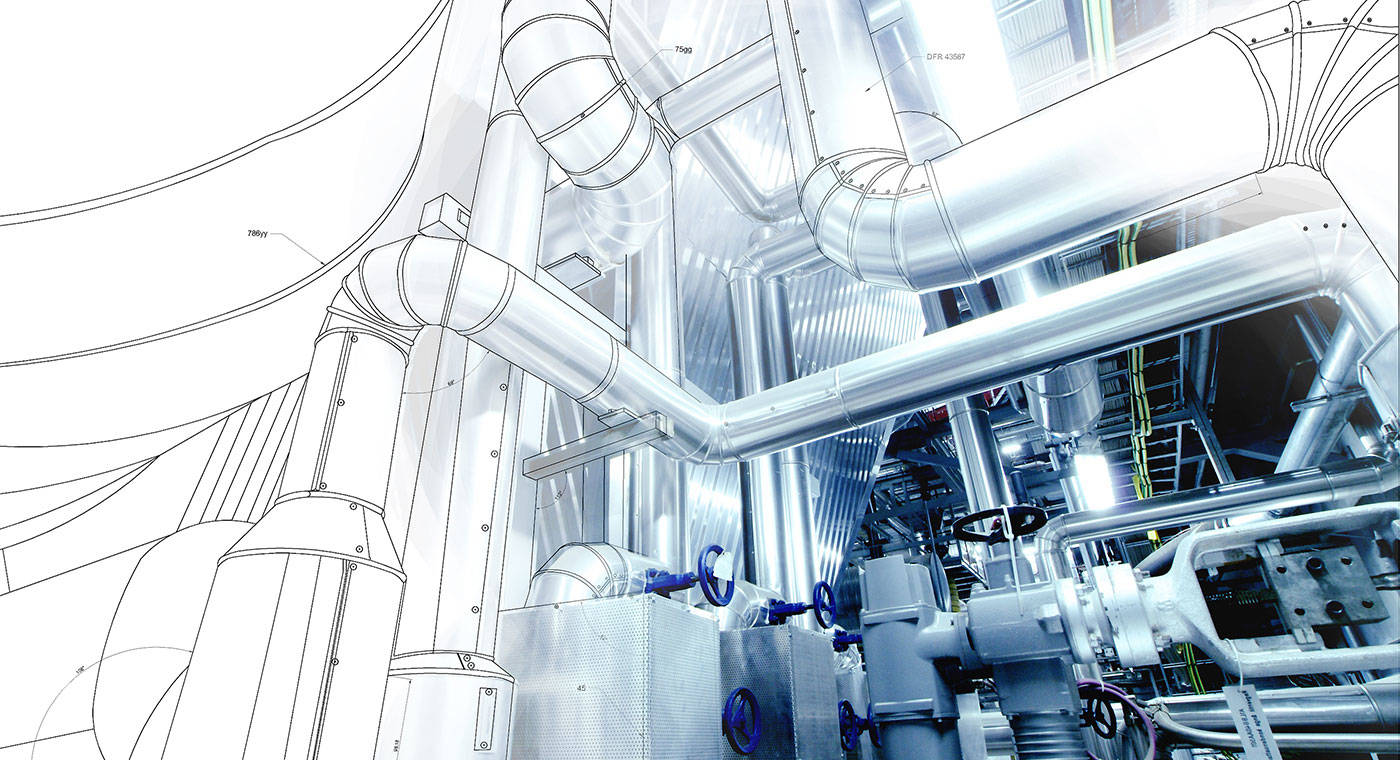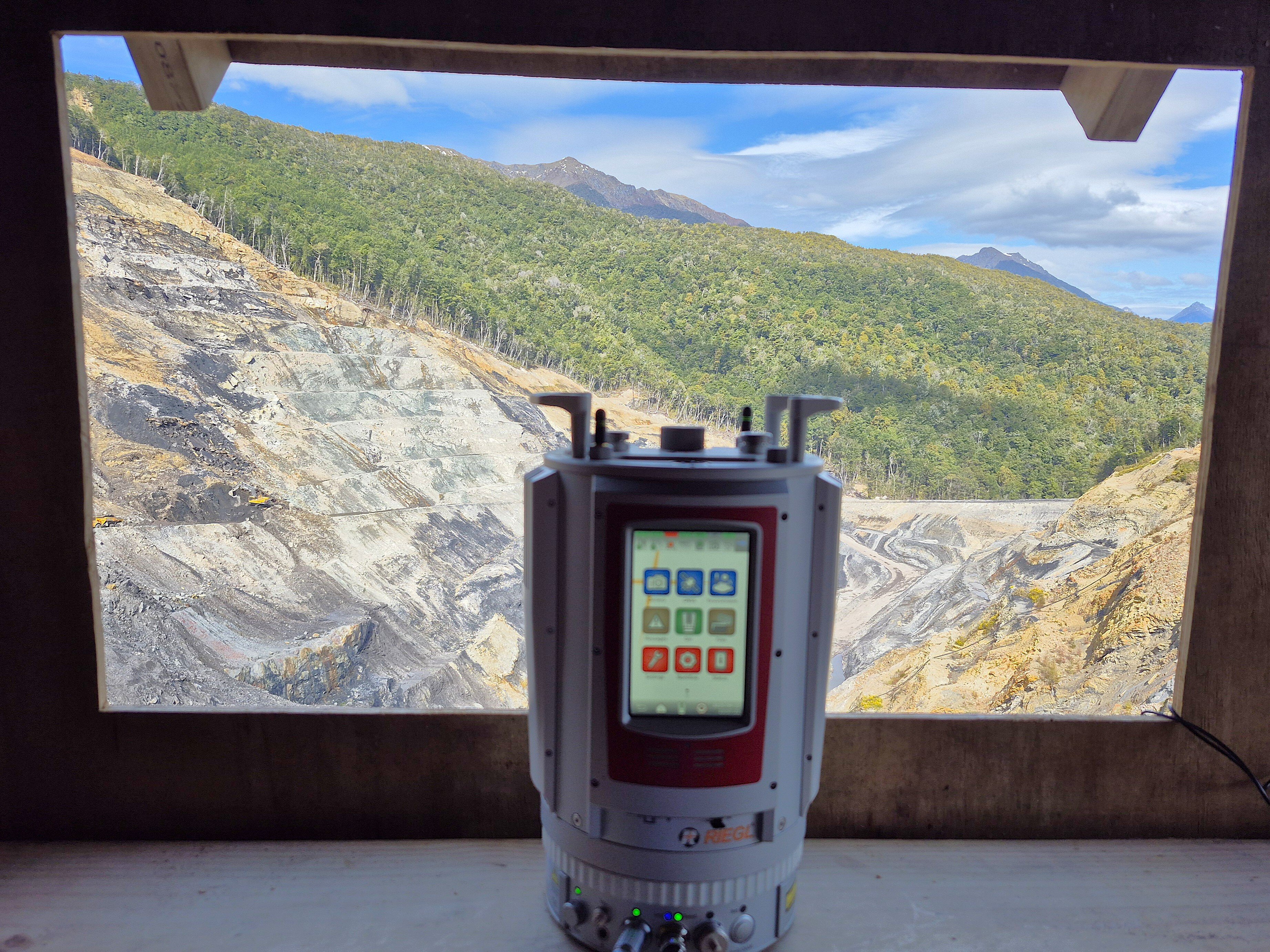
Land surveying is a field dedicated to measuring, documenting, and mapping the world. An ancient discipline in which surveyors aim to deliver information that informs everything from land boundaries to infrastructure projects. Accurate measurement lies at the core of it all.
Original Source - FARO Technologies
The Modern Art of Accurate Measurement
Over time, advancements in technology, techniques, and tools have enhanced the precision and efficiency of data capture. Modern reality-capture techniques and problem-solving show that land surveying is both a science and an art.

What Is Land Surveying?
Land surveying involves the precise measurement and cartography of the physical features of the earth's surface. The discipline guarantees the accurate execution of large-scale projects, compliance with legal property boundaries, and optimal land use. Early surveyors used basic geometry techniques to annually redefine boundaries around the river Nile. Modern-day surveying experts offer better results through technological advancements, but the fundamental principles of land surveying remain.
The Responsibilities of a Land Surveyor
Surveying is the science of pinpointing and marking features on, above, or beneath the earth's surface. Land surveyors contribute key spatial data by gathering, interpreting, analyzing, and presenting information about the natural or constructed environment. They provide diverse services, from collecting precise data for Geographic Information Systems (GIS) to aiding large infrastructure projects. This ensures continual productivity, efficiency, and safety throughout the surveying process.
Methods and Tools
Surveyors have used various methods, employing the latest technologies to make the surveying process more efficient. The advancement of modern technology in the 20th and 21st centuries has made surveying safer, easier, and more accurate. Employing technology like 3D laser scanners, GNSS, or drones to gather spatial data significantly improves the surveying process.
Techniques
Traditional land surveying encompasses a range of measurement and mapping techniques. These include chaining and taping for distance measurement and leveling for determining height variances. Modern methods leverage technology and ongoing hardware and software advancements.
LiDAR technology yields rapid and precise digital representations of real-world terrain, particularly for tasks like topographical data analysis. Additionally, aerial surveys employing drones or satellite imagery offer extensive mapping capabilities covering large land areas.
Modern-Day Land Surveying
Organizations seek to utilize "big data" for applications like Industry 4.0, smart cities, and the Internet of Things (IoT). The increased demand for spatial data also increases the requirements for innovative surveying technology. Consequently, the expansion of technology to deliver objective and accurate data has changed the approach to land surveying. Modern surveyors can expect to offer:
Accuracy and Precision:
Advanced technology like laser scanning offers high-quality, accurate, and precise spatial data.
Efficiency and Speed:
Hybrid Reality Capture™ increases the speed of static scanning and the accuracy of mobile LiDAR.
Data Collection and Analysis:
Geographical Information Systems (GIS) offer a powerful way to present data from various sources for better analysis.
Safety and Accessibility:
Drones and remote sensing technology have improved surveying safety by removing humans from hazardous environments without losing data.
Integration and Collaboration:
Cloud-based platforms have offered a new way to collaborate with stakeholders without significant time delays.
Cost-Effectiveness:
New technology increases the quality and quantity of work, making them long-term, cost-effective solutions.
Key Industries That Rely on Surveying
Surveying is crucial in various industries, offering vital data for effective planning, modern land development , and resource management. Land surveys ensure accurate land use and legal boundary adherence. Industries like construction and forestry rely on surveyors' expertise to make informed decisions, allocate resources efficiently, and minimize risks.
Site Surveying
Conducting a site survey is necessary before beginning land development projects. It lays the groundwork for understanding the land surrounding the project area. Surveyors thoroughly map a site's topography, boundaries, and infrastructure to deliver precise spatial data for planning and design.

Land surveys help identify potential obstacles and mitigate the likelihood of encountering legal complications. They are crucial for architects, engineers, and developers to make well-informed decisions and avoid costly errors during construction.
Civil Engineering
During the construction phase, surveys provide continuous feedback on the progress per the established design and plans. This ongoing process is paramount to ensuring the accurate positioning of buildings, bridges, and infrastructure while adhering to legal regulations. Precise measurements of newly developed areas deliver regular progress reports to key stakeholders.

Technology like terrestrial laser scanners and mobile LiDAR offer consistent, near-real-time feedback. The data aids in preventing legal disputes, project delays, and structural issues, enhancing safety and improving cost-effectiveness.
Mining
Mine surveying is a specialized field that is highly important in the industry. Ensuring underground tunnels' safety and enhancing mine efficiency and productivity is vital. Mine surveyors conduct underground and topographical surveys to map mineral deposits, plan extraction routes, and monitor subsidence. Precise measurements are crucial for accurately mapping production progress and ensuring that the mine is tunneling by predetermined plans.

Moreover, underground surveys play a vital role in promptly identifying rock face issues through convergence analysis. This results in the swift resolution of problems that could potentially result in a tunnel collapse.
Forestry
In forestry, land surveys manage and preserve forest resources. Dense forests and rugged terrain make data collection more complex than conventional land surveying. However, technological advancements — like drones to capture canopies and LiDAR for rapid scanning — make forest mapping simple and repeatable.

Various workflows use the information gathered from frequency surveying. These include assessing timber volume (trunk size/volume), carbon volume, above-ground biomass (AGB), species identification, and forest research.
Types of Land Surveying
The discipline of land surveying encompasses several forms, each tailored to specific needs and environments. As techniques and technology advance, so do the methods, enhancing precision and efficiency.
Topographical
Topographical surveying involves the accurate mapping of the attributes and elevations of the earth's surface. It produces precise maps and blueprints for various applications, such as construction, land development, and environmental management. Topographical surveys offer a comprehensive understanding of the terrain, aiding the planning of projects that integrate with the landscape.
Infrastructure
Infrastructure surveying involves accurately mapping existing structures and facilities, including roads, bridges , utilities, and buildings. Surveyors conduct this type of survey for maintenance, renovation, or expansion purposes, providing detailed information about the condition and layout of infrastructure. This information is essential for planning, designing, and managing projects to ensure their longevity and functionality.
Stockpile Volume Measurement
Measuring stockpiles involves accurately assessing the volume and dimensions of bulk materials stored in piles. These surveys are essential for inventory management, financial reporting, and resource planning, particularly in industries like construction or mining. Techniques like laser scanning provide precise data on material quantities, improving efficiency and accountability.
Boundary
Boundary surveying involves establishing and re-establishing legal property lines. The surveys resolve transactions, land division, and property disputes. Clearly defined property lines help prevent legal conflicts and ensure compliance with land use regulations and zoning requirements.
Geographic Information Systems (GIS) and Digital Models
Capturing large amounts of spatial data is only one part of land surveying. Surveyors need to constructively analyze georeferenced data, which is why GIS is important. GIS provides an advanced tool for managing, analyzing, and visualizing data. It integrates various sources of data so surveyors can create detailed digital models representing the physical world.
The technology enables thorough analysis of spatial data, informing decision-making and enhancing surveying efficiency. It is necessary in modern land surveying, from urban planning to infrastructure development. Here are some examples of elevation models typically used in GIS.
Digital Elevation Model (DEM)
DEMs represent the topography of the bare earth surface, excluding trees, buildings, and other above-ground features.
Digital Surface Model (DSM)
DSMs depict natural and manufactured environmental features, such as treetops, buildings, and other objects.
Digital Terrain Model (DTM)
DTMs represent the earth's surface, clearly depicting the terrain without any manufactured or natural structures, such as buildings or vegetation. However, they include natural features like rivers and ridges to accurately define the land's topography.
Geospatial Technology
Modern geospatial technologycomprises many tools and methodologies for acquiring, analyzing, and visualizing spatial data. Progress in geospatial mapping has transformed the approach to land surveying. Transparent and consistent data form the basis for sustainable development, smart cities, efficient resource management, and Industry 4.0. FARO Technologies provides 3D laser scanning hardware and software, offering surveyors fast, precise, and user-friendly solutions to improve operational processes and achieve cost efficiency.

Terrestrial Laser Scanning (TLS)
Commercial developers made terrestrial laser scanning (TLS) viable in the late twentieth century, following initial developments in the 1960s. It has since become an essential part of a surveyor's technological toolkit. The ongoing innovations throughout the 21st century have significantly enhanced scanners' accuracy, flexibility, and speed. As a result, their usability has expanded, leading to improved land surveying results.
Mobile LiDAR
Unlike TLS, mobile LiDAR does not necessitate a static scanning position. This is thanks to its integrated IMU (inertial measurement unit) and SLAM (Simultaneous Localization and Mapping) algorithm. Land surveyors can map previously remote areas, mount the device to vehicles, and achieve significantly higher capture speeds.
Released in 2023, the FARO Orbis™ Mobile Laser Scanner continues the work done by GeoSLAM in the UK. The scanner offers land surveyors a versatile, fast, and precise tool. When scanning in Hybrid Reality Capture™ mode, Orbis has up to 2mm accuracy — further minimizing the speed/accuracy trade-off.
 Drone LiDAR
Drone LiDAR
Unmanned Aerial Vehicles (UAVs), commonly known as drones, have gained widespread popularity and accessibility in the 21st century. For professional surveyors, drones have changed the method of capturing extensive areas, providing a new perspective of the world. Drones designed for high payloads, like RIEGL's VUX, can integrate LiDAR technology, expanding land surveying use cases.
The Modern Fusion of Art and Science
Land surveying has transformed into a sophisticated fusion of art and science. It blends traditional methods with modern surveying equipment to achieve increasing levels of accuracy. Technology advancements improve the accuracy of data and broaden the potential for future progress. Embracing innovation ensures that land surveyors remain at the forefront of creating a thoroughly mapped and digitized world.





